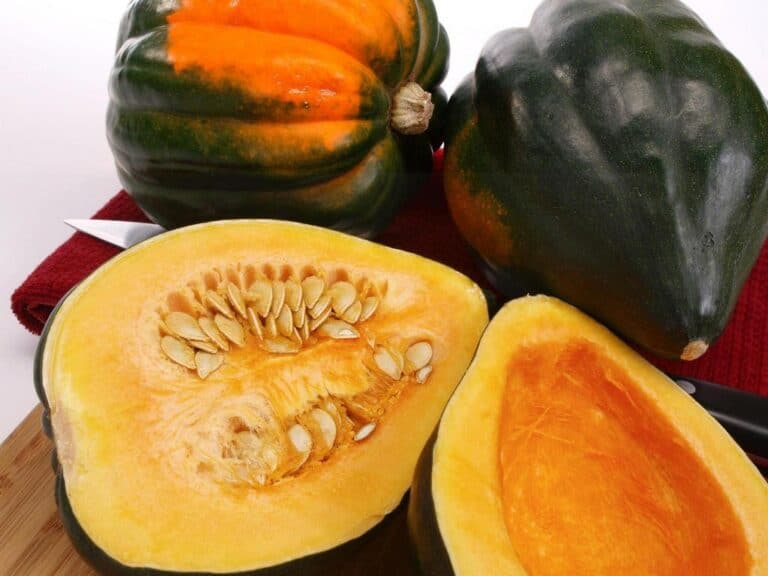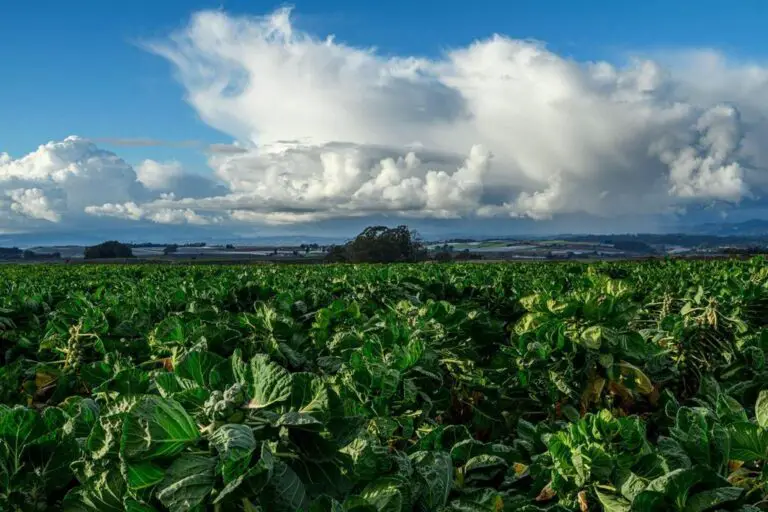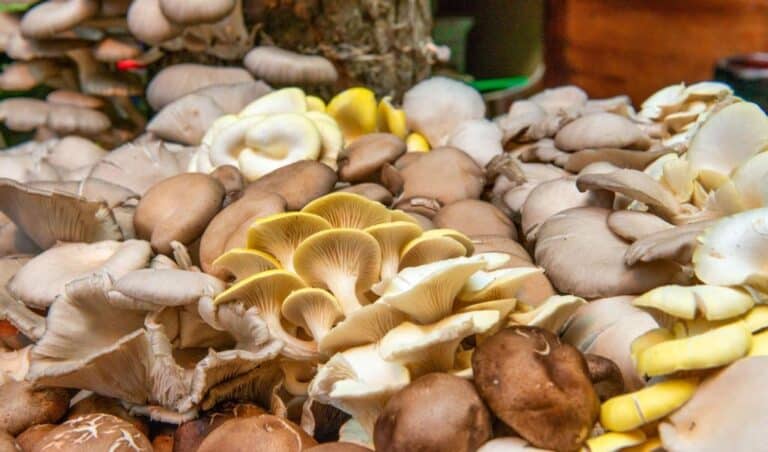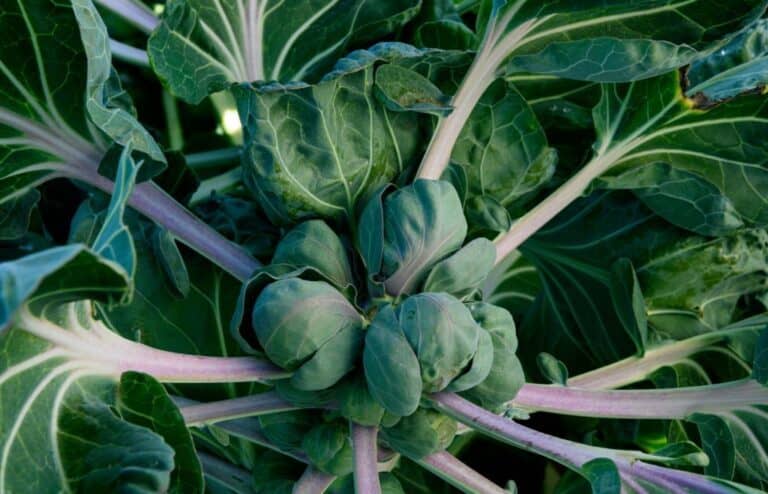How Cold Can Carrots Tolerate for Growing? Carrots Temperature Tolerance

Carrots are a staple in many gardens and kitchens, but did you know that the temperature can have a big impact on their growth and survival? Whether you’re planting in a pot, raised bed, or garden plot, it’s important to understand the temperature tolerance of carrots.
If you’re wondering how much cold carrots can tolerate before they stop growing, then this article is for you.
In this post, we’ll look at how well carrots can tolerate cold temperatures, what their ideal growing temperature is, and how to protect them from the elements. So, grab a glass of iced tea and get ready to learn all about carrots’ temperature tolerance!
Carrots’ Optimal Growing Temperature
Soil temperature and the last frost date are the best ways to know when it’s safe to plant seeds directly in the garden. A soil thermometer is a simple but useful garden device that looks like a meat thermometer but measures down to lower temperatures. Measure soil temperatures periodically throughout the day or between 9 and 11 a.m. to get a good average.
Carrots grow best in cool weather, but if the right conditions are there, they can also grow in warm weather. The ideal temperature range for carrots is between 50°F and 80°F (10°C and 27°C). In this temperature range, carrots grow well and produce sweet, crunchy roots.
Temperature can have a significant impact on the seed germination and growth of carrots. Carrot seeds require a soil temperature of around 50°F to 60°F (10°C to 15°C) for proper germination. If the soil temperature is too low, seeds may not germinate or may take longer to germinate. On the other hand, if the soil temperature is too high, seeds may not germinate or may become stunted.
To make sure seeds germinate and grow well, it’s important to keep an eye on the soil temperature and make sure carrots have the right conditions. This can be done by covering, shading, or adding mulch to the soil to keep it at the right temperature for germination and growth.
How Cold Can Carrots Tolerate? Carrots Temperature Tolerance
Carrots are cold-tolerant vegetables that can withstand light frosts, but they are not frost-hardy. The minimum temperature that carrots can tolerate is around 28 °F (-2 °C). If temperatures drop below this, the growth of the carrots will slow down or stop completely, and the roots may become tough and bitter. In extreme cold conditions, the carrots may be damaged or killed.
How cold temperatures affect the growth and survival of carrots depends on how long and how cold it is. Short periods of cold weather can slow down the growth of the carrots but won’t cause significant damage. But if plants are exposed to cold for a long time, their growth can be stunted, their roots may not grow well, and their yields may go down.
The Effects of Frost on Carrots
Frost can have a significant impact on the growth and health of carrots. Carrots are a cool-season crop that can tolerate light frosts, but heavy frosts or extended periods of cold weather can damage or kill the plants. Depending on how bad and long the frost lasts, it can stop carrots from growing and make them produce less, or it can kill the whole crop.
One of the most obvious things that frost does to carrots is slow their growth. When the soil temperature drops below a certain level, the growth of the carrots slows down or stops altogether. This can result in smaller roots or even incomplete root development. In some cases, the leaves may not grow as they should, causing them to turn yellow or wilt.
Frost also often causes black or brown spots to show up on the roots of carrots. This is a result of the cold water in the soil coming into contact with the carrots, causing the tissue to freeze and become damaged. The roots may also become soft and mushy, making them unmarketable and reducing the overall yield of the crop.
As was already said, temperature can have a big effect on how and when carrot seeds sprout and grow. Seeds may not germinate or may take longer to germinate if the soil temperature is too low. Conversely, seeds may not germinate or may grow stunted if the soil temperature is too high.
How to Protect Carrots from Cold Weather

Protecting carrots from cold weather is important to ensure healthy growth and high yields. Here are a few measures that can be taken to protect carrots from cold temperatures:
- Mulching: A layer of mulch around the carrot plants can help to insulate the soil and maintain soil temperature, preventing it from dropping too low.
- Covering the plants: Frost blankets, row covers, or other protective covers can be used to protect the carrots from cold temperatures and frost.
- Planting in a greenhouse or cold frame: Planting carrots in a greenhouse or cold frame can provide protection from cold weather and maintain optimal temperature conditions for growth.
- Choosing the right location: Planting carrots in a sunny, protected location can help to prevent exposure to cold weather and maintain ideal temperature conditions.
- Planning the planting time: Planting carrots at the right time can help to ensure that they are not exposed to cold weather during the critical stages of growth of carrots plants. In general, it’s best to plant carrots in the spring or fall when the temperatures are cooler.
Even when it’s cold outside, you can help your carrots grow and stay alive by keeping the temperature where it needs to be. These steps will help keep the temperature just right so that the carrots can grow and stay alive.
How To Extend the Carrot Growing Season in Cold Weather
It can be hard to grow carrots in cold weather, but with the right tools and methods, you can get fresh, tasty carrots all through the winter. Carrots are a cool-season crop that can handle light frosts, but they need protection and care to grow well in colder weather.
One of the best ways to extend the carrot growing season is to use season-extending techniques like row covers or cold frames. These structures keep the soil and air warm enough for the carrots to grow by insulating and protecting them from the weather. Also, covering the soil around plants with mulch can help keep the soil at the right temperature and keep water from evaporating, which is especially important when it’s cold and dry in the winter.
Choosing the right carrots is also important if you want to grow them for an extended period of time. Some carrot varieties are more cold-tolerant than others, so it is important to choose one that is well-suited to your climate and growing conditions.
Carrots with short roots, like “Nantes” or “Danvers,” are usually the best ones to grow in colder temperatures because they can handle the cold better.
For winter carrots to grow well, you need to use techniques that extend the growing season, choose the right varieties, and prepare the soil properly. The soil should be easy to drain and full of organic matter. This will help keep the soil at the right temperature and level of moisture, which are both important for the carrots’ health and growth.
Conclusion
In conclusion, carrots are a cool-season crop that can handle light frosts, but the plants can be hurt by long periods of cold weather or heavy frosts. Carrots can withstand a range of temperatures depending on their variety. Some can handle colds better than others.
To grow carrots successfully in cold weather, it’s important to take precautions like using row covers or cold frames to extend the growing season, mulching the soil around the plants, choosing cold-tolerant varieties, and planting the carrots at the right time and in the right place.
By knowing how carrots react to different temperatures and taking the steps needed to protect the plants from frost, gardeners can extend the carrot growing season and enjoy a bountiful harvest of fresh, tasty carrots all through the winter.






